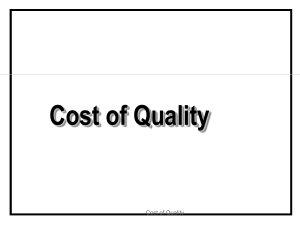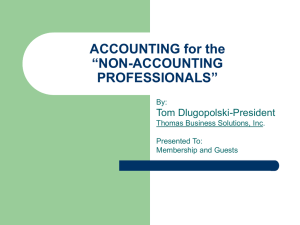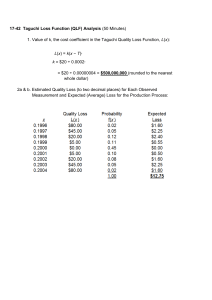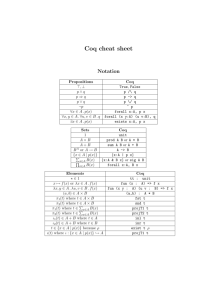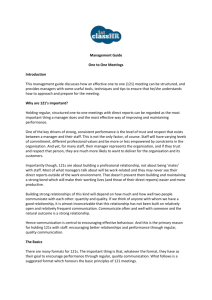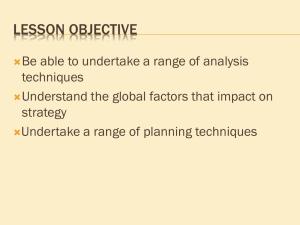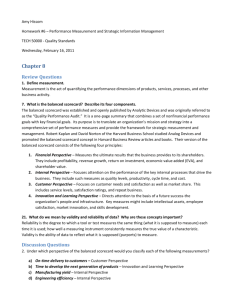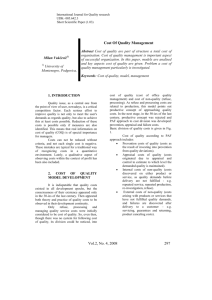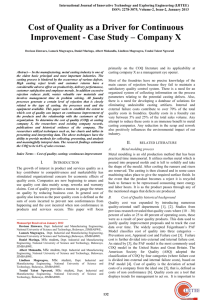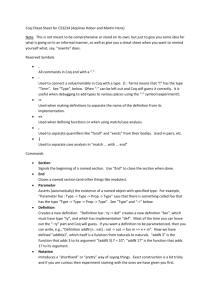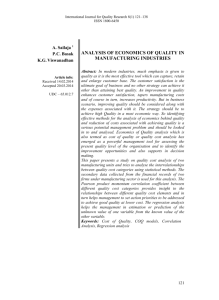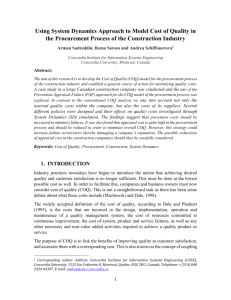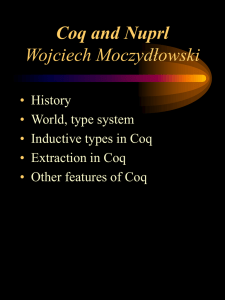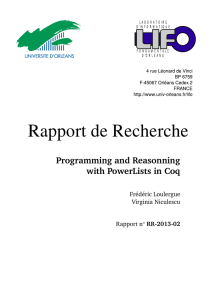Cost of Quality (COQ)
advertisement
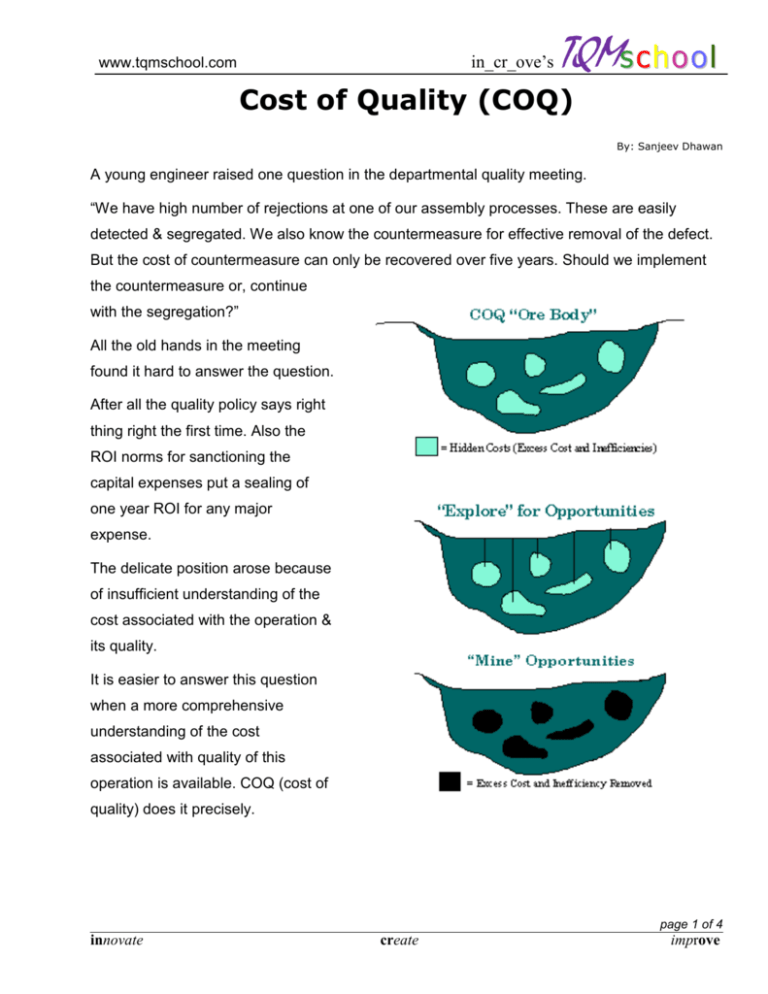
in_cr_ove’s www.tqmschool.com TQMs c h o o l Cost of Quality (COQ) By: Sanjeev Dhawan A young engineer raised one question in the departmental quality meeting. “We have high number of rejections at one of our assembly processes. These are easily detected & segregated. We also know the countermeasure for effective removal of the defect. But the cost of countermeasure can only be recovered over five years. Should we implement the countermeasure or, continue with the segregation?” All the old hands in the meeting found it hard to answer the question. After all the quality policy says right thing right the first time. Also the ROI norms for sanctioning the capital expenses put a sealing of one year ROI for any major expense. The delicate position arose because of insufficient understanding of the cost associated with the operation & its quality. It is easier to answer this question when a more comprehensive understanding of the cost associated with quality of this operation is available. COQ (cost of quality) does it precisely. page 1 of 4 innovate create improve in_cr_ove’s www.tqmschool.com TQMs c h o o l What ? COQ (Cost of quality) is a financial measure of the quality performance of an organisation. It is essentially a measure of lack of quality & can also be termed as cost of bad quality. Why? Understanding cost of quality helps organisations to develop quality conformance as a useful strategic business tool that improves their product’ services & brand image. This is vital in achieving the objectives of a successful organisation. When? COQ is primarily used to understand, analyse & improve the quality performance. COQ can be used by shop floor personnel as well as a management measure. It can also be used as a standard measure to study an organisation’s performance vis-à-vis another similar organisation and can be used as a benchmarking indices. How? The costs associated with quality are divided into two categories: Costs due to poor quality Costs associated with improving quality Prevention costs and appraisal costs are costs associated with improving quality, while failure costs result from poor quality. page 2 of 4 innovate create improve in_cr_ove’s www.tqmschool.com TQMs c h o o l Accordingly, COQ identifies three specific cost areas: 1. Prevention The cost associated with planning, training and writing procedures associated with doing it first time right. 2. Appraisal The cost associated with checking and testing to find out whether it has been done first time right. 3. Failure The cost (internal or external) associated with failure to do it first time right. These costs are calculated in two distinct ways. Hard costs: These are generally measured & recorded with the organisation. These can be directly attributed to prevention, appraisal or, failure. Examples are: Prevention (Training Programmes, Preventive Maintenance) Appraisal (Depreciation of Test/ Measuring Equipment, Inspection Contracts) Internal Failure (Scrap, Rework, Downtime, Overtime) External Failure (Warranty, Allowances, Customer Returns, Customer Complaints, Product Liability, Lawsuits, Lost Sales) Soft costs: These are estimated either directly or as part of an estimate including normal work. These estimates are then converted to cost by using average cost figures from accounts. page 3 of 4 innovate create improve in_cr_ove’s www.tqmschool.com TQMs c h o o l Examples are: Prevention (%age man hours spent on training, writing procedures, planning) Appraisal (%age man hours spent on checking, testing) Internal Failure (%age man hours spent on rework, downtime) External Failure (%age man hours spent on handling failure, warranty etc, lost sales) Ludvall-Juran quality cost model (which applies the law of diminishing returns to these costs), shows that prevention and appraisal costs have a direct relationship with quality conformance. They increase as quality conformance increases. Thus, quality conformance should have an inverse relationship with failure costs. As quality conformance increases failure costs should decrease. Understanding these relationships and applying the cost of quality process enables an organization to decrease failure costs and assure that their products and services continue to meet customer expectations. Benefits Identifying COQ can have several benefits: It provides a standard measure across the organisation & also inter-organisation It builds awareness of the importance of quality It identifies improvement opportunities Being a cost measure, it is useful at shop floor as well as at management level page 4 of 4 innovate create improve
